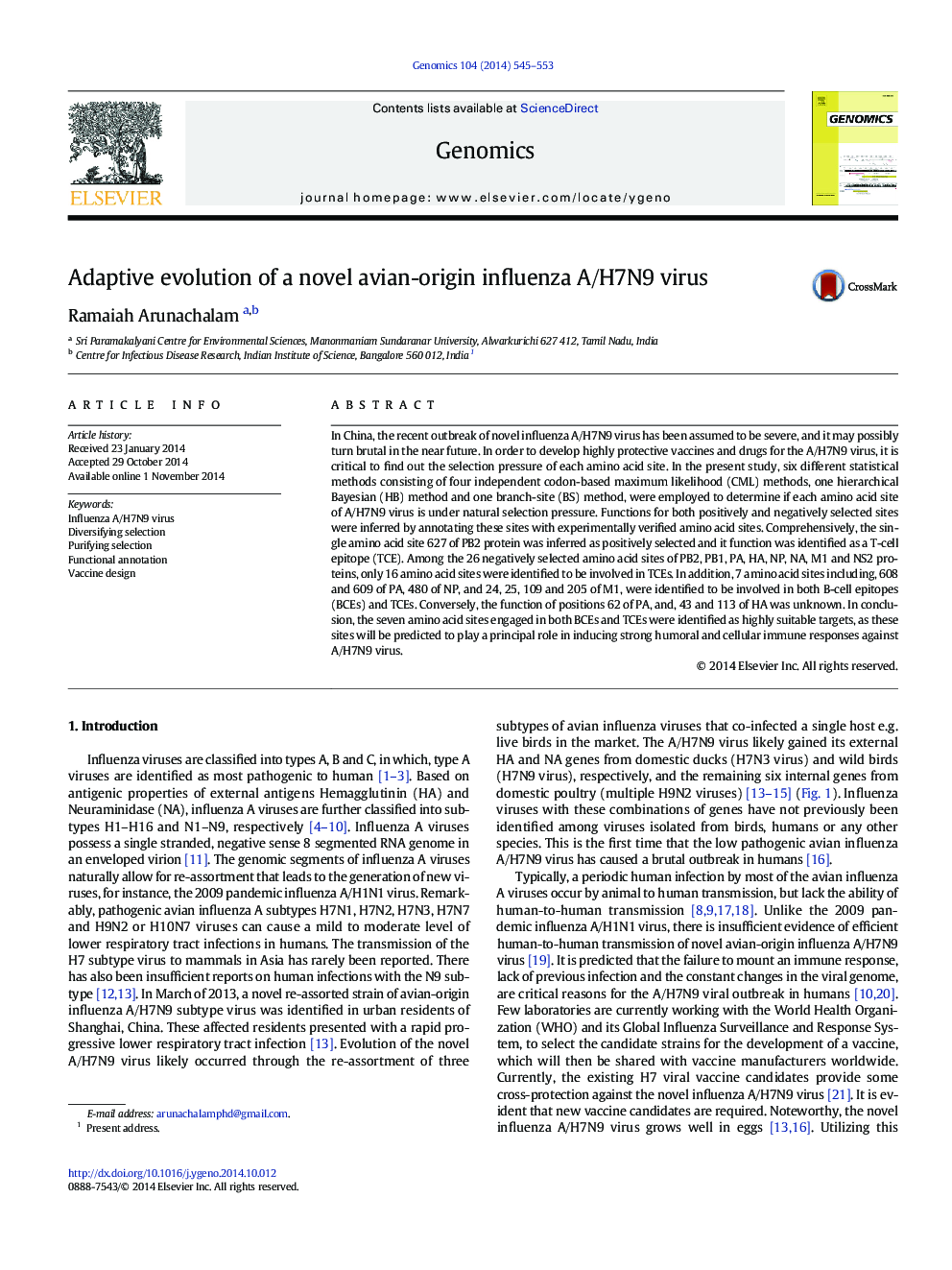| کد مقاله | کد نشریه | سال انتشار | مقاله انگلیسی | نسخه تمام متن |
|---|---|---|---|---|
| 2820681 | 1160879 | 2014 | 9 صفحه PDF | دانلود رایگان |

• Four independent CML methods, one HB method, and one BS method were employed for natural selection analyses
• In A/H7N9 virus, totally 1 and 26 amino acid sites were identified as positively and negatively selected, respectively
• Amino acid site 627 of PB2 protein was identified as positively selected and it function was inferred as TCE
• Totally 16 out of 26 negatively selected sites of PB2, PB1, PA, HA, NP, NA, M1 and NS2 were found to be involved in TCEs
• Seven negatively selected sites 608 and 609 of PA, 480 of NP, and 24, 25, 109 and 205 of M1 engaged in both BCEs and TCEs
In China, the recent outbreak of novel influenza A/H7N9 virus has been assumed to be severe, and it may possibly turn brutal in the near future. In order to develop highly protective vaccines and drugs for the A/H7N9 virus, it is critical to find out the selection pressure of each amino acid site. In the present study, six different statistical methods consisting of four independent codon-based maximum likelihood (CML) methods, one hierarchical Bayesian (HB) method and one branch-site (BS) method, were employed to determine if each amino acid site of A/H7N9 virus is under natural selection pressure. Functions for both positively and negatively selected sites were inferred by annotating these sites with experimentally verified amino acid sites. Comprehensively, the single amino acid site 627 of PB2 protein was inferred as positively selected and it function was identified as a T-cell epitope (TCE). Among the 26 negatively selected amino acid sites of PB2, PB1, PA, HA, NP, NA, M1 and NS2 proteins, only 16 amino acid sites were identified to be involved in TCEs. In addition, 7 amino acid sites including, 608 and 609 of PA, 480 of NP, and 24, 25, 109 and 205 of M1, were identified to be involved in both B-cell epitopes (BCEs) and TCEs. Conversely, the function of positions 62 of PA, and, 43 and 113 of HA was unknown. In conclusion, the seven amino acid sites engaged in both BCEs and TCEs were identified as highly suitable targets, as these sites will be predicted to play a principal role in inducing strong humoral and cellular immune responses against A/H7N9 virus.
Journal: Genomics - Volume 104, Issue 6, Part B, December 2014, Pages 545–553